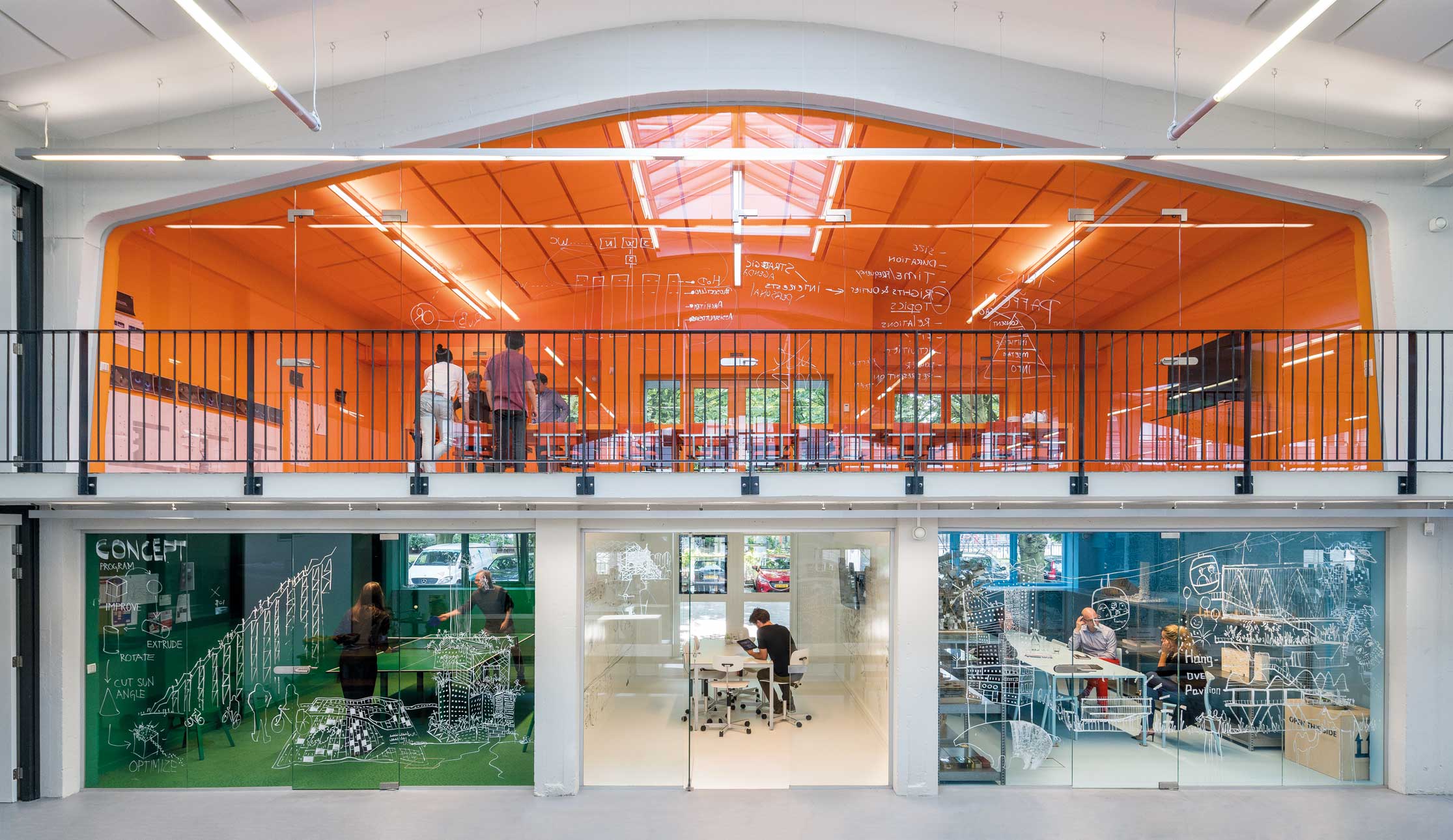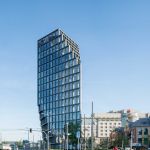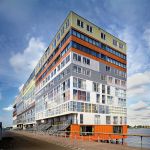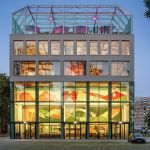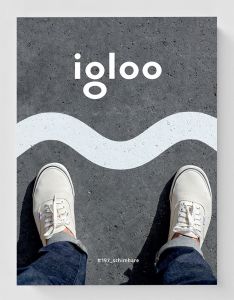Nathalie de Vries, MVRDV: „Everybody deserves room to live”
How will our world change and, in particular, how will architecture change over the following years? These are topics that both concern and incite us at a time when a constantly shifting reality has made us increasingly aware of the fact that we need more space. More space to work, more space to leave, or more space to simply breathe. This is one of the realities strongly advocated by Prof. Arch. Nathalie de Vries, who in 1993, alongside Winy Maas and Jacob van Rijs, founded MVRDV, a multidisciplinary Dutch practice that functions at the intersection between architecture and urban planning.
In this special context experienced by all of humankind, we talked to Nathalie de Vries about the architectural practices of the future, the need for space, the current and future challenges that architects face and the cities that need to be given back to the people.
The world as we know it is shifting. We are in a restart moment in the way we work and the way we relate to each other. What now? What’s next in architecture?
I think in recent months we’ve seen a couple of things. Firstly we are now, at least in our office, fully benefitting from the fact that we were already working in a digital environment. With the help of all the new communication tools that have arisen, we managed to do our jobs. Except for the physical act of model making, that was the most difficult one, but we managed to keep on working. It showed how incredibly motivated architects, and people working in architecture offices, often are. However architecture, and the making of it, is also about interaction and integration, so we have also started to realise now how much we missed having workshops, having intense meetings with our clients and with our consultants, and visiting sites. I think in the long run we will have to try to find working solutions for those aspects of our work.
- Nathalie de Vries, © Erik Smits
- Bałtyk Tower, © Ossip van Duivenbode
For architecture and urban planning in general, I think it’s very important that we all realise how important the quality of our homes is, so that we’re able to be there all together, the whole family, and still find a little bit of space for yourself, or maybe to have an outdoor space. Many people were in lockdown for some time, only in their houses, so we can’t continue to reduce houses endlessly to smaller and smaller spaces. We need a nice outdoor space for each house, whether it’s a French balcony, a roof terrace, or a patio.
In our cities we were also confined to our neighbourhoods, and through that people realised how much or how little opportunity different neighbourhoods have for people to go outside, to have a stroll and for children to play. All these things I think we’re seeing in a new light. It shows how important our immediate surroundings, where we work and live, are for all of us – and that we need more equality in how we share a lot of things.
There has already been a big push towards digitalisation of workflows, and being able to work remotely. Do you think the pandemic will cause an acceleration of that, and if so, do you think that would be a good thing or a bad thing?
I think it’s a good thing that we are able to have more meetings online. Clients also told me that even the least tech-oriented people in their organisations have now seen that is possible. So if we can avoid unnecessary travelling, I think that’s great, of course. I also think that for those people who want to combine their family life or other personal things with working, we’ve also seen a much greater tolerance for that. It gave more flexibility for many people to work different hours, or stay at home and work there. I think that’s one of the positive things from the past months.
But I also realize that although it can be comfortable to stay at home, it’s physically not easy to be Zooming eight hours a day, sitting behind your tiny laptop. Somehow all the chit-chat around work in a physical office space – the informal stuff, looking in somebody’s eyes, having a coffee and an informal meeting – all of these non-planned events are important for us all, in our working life as well as our personal life. I’m not yet sure how, but I think we will have to start to design and think about other solutions for this.
Is there an ongoing MVRDV project that has changed its perspective or its process because of the pandemic?
A lot of clients ardently tried to push on, to work hard and keep things rolling, but in other cases communication got more difficult. I have already been thinking for a long time about things we always tried to do with our work: to divide public space equitably around our buildings and our houses; the continuous battle for good outdoor space and apartments that are not too tiny; the ongoing attempts to make office buildings with good indoor climates and openable windows; to have roof terraces, even in office buildings so people can work outside. I think, or at least I hope, that now we will find more support for these ideas that we already have, because I think these are all about quality of life, the quality of living, and the quality of our cities and workspaces.
In short, yes, I believe we are seeing more resonance for our ambitions and ideas, but at the same time it’s a complicated period because we are heading towards an economic crisis – in fact we are already in it – so once again, difficult financial choices have to be made in a lot of projects. I hope that we can still work on the long term, and I think that as architects we should help to find creative ways to be economic on one hand, but also sustainable and still be spatially generous in our projects on the other hand.
What would you say are some of the things that you’ve discovered or learned during the isolation period – in general, not just in architecture?
In general I think I’ve encountered a lot of niceness in the people around me, in work and also in my neighbourhood and the other places I’ve spent time – a lot of solidarity. But I think we also learned, as a society, that there are groups who have been especially hit by this crisis. These are the groups that disappeared in lockdown, who maybe don’t have digital connections: the elderly and ill who were in total isolation. So I think we should continue to think about the fact that there are groups in society who need our support even more now. That’s something that unfortunately came to the surface more. In general I think we need to re-appreciate the role of the public, including the role of the public in design; we must appreciate the public as a client of architects and designers and society in general.
Can you give an imaginary glimpse of tomorrow’s offices?
Well again, now we are opening up we are also starting to realise what we appreciate in our offices! That includes a realisation about where we lack space, actually. We need spacious workplaces now, because that’s why we go to the office – to have room to meet. I’m talking about a transition of offices from being just workspaces with lots of desks to areas where you can meet and collaborate in all kind of configurations. That’s the new challenge.
- Silodam, © Rob‘t Hart
- Concordia Design, © Juliusz Sokołowski
I guess what we need to figure out now is this economisation of architecture that we’ve been living with for so long. That now has to end. We need high ceilings, openable windows, generous corridors, and we need a flexible array of different types of workspaces. People who work in factories or other workspaces, they need enough space too, so it’s not only offices.
We will probably start to see the beginning of the end of this extreme economisation of the usage of space. I think this possibility coincides with the fact that we can also work from home more. Maybe we need another way of thinking about the division of space, just as the streets have now been opened up in the Netherlands to make outdoor terraces so that people can go to restaurants and other businesses again. That’s a major re-division of space between cars, bicycles, and pedestrians – it’s a huge spatial reorganisation, and we need that within buildings as well.
What should we all change in our cities in the near future?
We must make sure that public space is distributed equally among everybody, and the same for users – it should be more equal in terms of who is using the street. Of course everybody knows that we reserve an enormous amount of space for cars, often cars that aren’t even driving. They’re parked or they only use the roads in rush hour. It’s tough for all of us to make such big changes but I think we need to find a way to deal with this, somehow.
What challenge would you give young architects today?
I think architects have always been good at combining general interest, a sense of culture, technical aspects, and commercial aspects. So while I think the challenges have become even bigger, it’s also important that we don’t forget our societal tasks. We are usually the most important negotiators in the project, together with the client, on these social aspects. Our current moment in history confirms, for me, the importance of that extra task we have. There’s a lot of attention given to the interior nowadays, as well. I think in recent years we already saw more attention for interiors, and the interiorisation of architecture, and again that’s at stake.
I don’t think anyone should get gloomy that we can’t meet each other any more. I’m a positive-thinking person! I hope we can find vaccines and all these things. But I do think that even when we have a vaccine, we still need some more space for everybody. Everybody deserves room to live.
Interview published in igloo #195_august-september 2020



